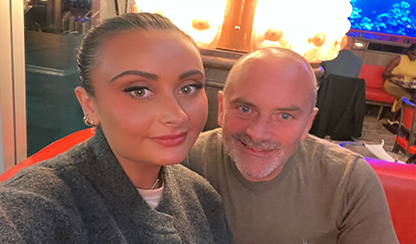23 January 2024
Institute news

Two of our research scientists have been awarded CASS Foundation Medicine/Science grants to support their innovative work into the improved efficacy and safety of drug therapies delivered following heart attack or stroke.
Dr Mitchell Moon and Dr Mark Vidallon, who use different approaches to target drugs directly to the site of where they are needed, each received $60,000 to advance their exciting work.
Mitchell, who has a background in biology and is a thrombosis researcher, was funded to support his new biotechnological approach for the effective and safe treatment of clots that occur during heart attack and stroke.
“Currently the medications for treating blood clots are ineffective in many patients and are associated with devastating side effects,” Mitchell said.
“Using this approach, we believe that we can improve on how effective and how safe the current clot-busting drugs are, as well as making them more readily available to patients in regional and remote communities.”
The grant will allow Mitchell to continue to work on turning the cells that cause blood clots into biologically derived nanoparticles, which can then deliver clot-busting medications directly to the clot.
Mark, who has a background in chemistry and physics, is developing a system using ultrasound imaging guided therapy that can be used to deliver mRNA directly to the site of inflammation that occurs in cardiovascular disease.
The role of mRNA is to carry the instructions to create specific proteins in our cells.
“The mRNA that we deliver to the site of inflammation using an ultrasound machine is basically a command, or a code, to tell the cell to produce the drug that we want right at the specific spot where it’s needed,” Mark said. “We use ultrasound imaging guided therapy to send the nanoparticle containing the mRNA to the target area, then increase the power so the nanoparticle increases to 20 times its original volume to form a bubble, which then jiggles and massages the cells that then allow the mRNA to pass through the cell membrane and deliver the message to create the drug.”
Down the track, it is hoped this type of drug delivery method could be used in any hospital that has an ultrasound machine, Mark said, and used for people who are also at risk of heart attack to help prevent heart attack from occurring.





